Over the last couple months I’ve developed a keen interest in stir-frying - the history of it; the art of it and most importantly the delicious dishes that are borne from it. Part of this interest is down to my rather strange proclivity for rabbit hole niches, but part of it is also down to the simple fact that I’ve come to identify the simple stir-fry as the perfect reprieve to the relatively onerous dishes that I tend to magnetise toward.
The other day I stumbled across a recipe for a dish that I haven’t had for a long time: Beef in Oyster Sauce or nuea pad nam mun hoi — a dish of Chinese origin that, like many similar dishes, has found itself a staple within Thai cuisine. It is merely beef, stir fried with a choice of vegetables and oyster sauce amongst other basic seasonings - but it is undeniably tasty and moreish. Having built up a little more knowledge of late when it comes to some of the finer points of getting a stir-fry right I tweaked a few things in the recipe per personal preference and the result was so incredibly delicious (and simple) that I thought I should share it.
Recipe (for 2 ppl)
I am slowly realising that not all recipes are created equal. I’m also realising that many authors skim over things that they assume are implicit (I have been guilty of this). I’ve never fancied myself as a productive recipe writer because I tend to cook fairly traditional foods (as opposed to personal creative inventions) so I never saw there much point in trying to fix what isn’t broke. However, I seem to have come far enough now that I find myself often wanting to put my own imprint on dishes - not to change their essence but to refine them slightly according to what I know. The below recipe is an example of this in action - albeit an extremely simple one.
A note on cooking methodology walk throughs
I realise that the detail of a recipe is dependant on its audience. If you are giving a recipe to a chef you don’t have to explain everything in minute detail. Though if you’re writing a recipe to a novice, it’s probably helpful to be more comprehensive. In this light, I’ve provided a long version of the cooking method and an abbreviated method below. Do let me know if this is helpful (or useless) as it’s just a thought/experiment for now.
Ingredients
Beef Marinade
2 tbs soy sauce
2 tbs Shaoxing wine
1/4 tsp baking soda
2 tsp corn starch
1/2 tsp salt
1/4 tsp sugar
1/2 tsp sesame oil
Primary Stir-Fry Ingredients
300g of rump
5 cloves garlic, roughly chopped
1 long red chilli
1/3 cup of spring onions, firm parts (see below for more info)
2 tbs of oyster sauce
Pinch of salt (about 1/4 tsp if you want to measure it)
~ 150ml of chicken stock (+ more on hand if you need it)
3 tbs oil
Potato starch or Cornstarch slurry1
1 tbs corn or potato starch mixed together with 2 tbs of water
Method - The Long Version
Preparing the Beef
Cut the beef into thin strips of about 1/4 of a centimetre. Cover the beef in water, then repreteadly agitate it by squeezing it, massaging it roughly with your fingers and or kneading it with your knuckles for about 1-2 minutes.
After you’ve sufficiently agitated the beef, get as much moisture out of it as possible by squeezing it through a sieve until it’s exuding barely any juice.
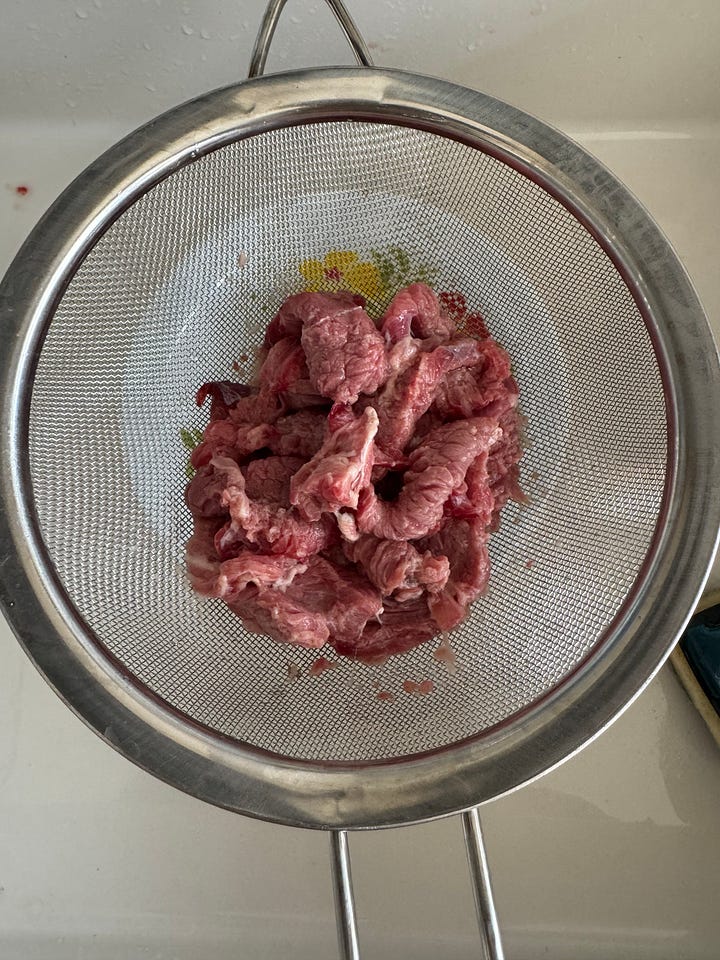
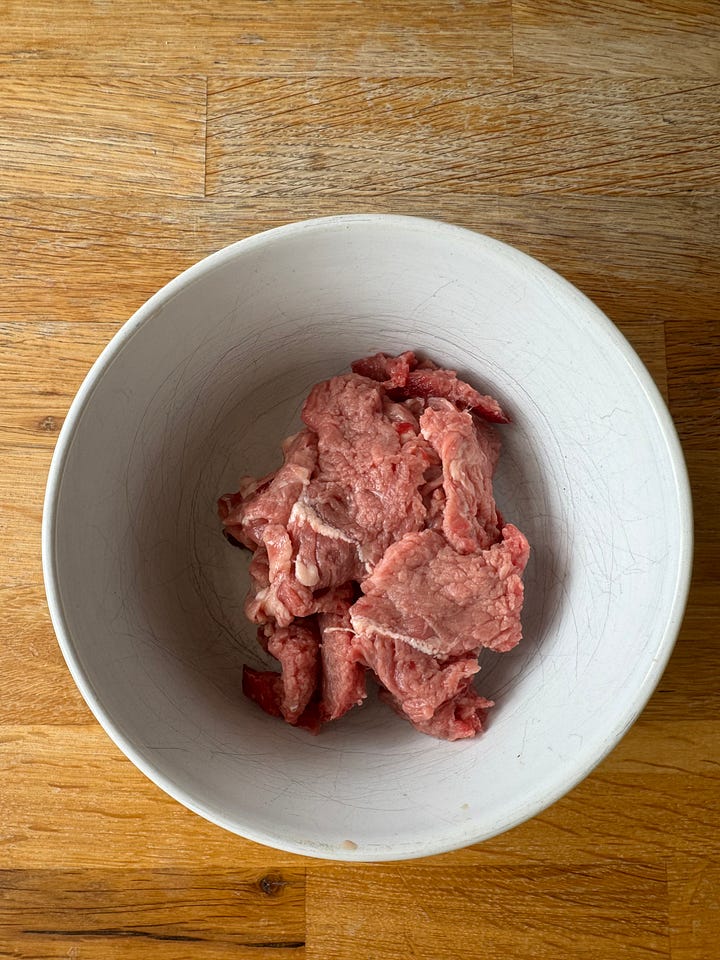
Once the beef is relatively dry make the marinade by adding all marinade ingredients in a separate bowl and stirring it together so that the sugar, salt, starch and baking soda is dissolved and/or evenly distributed. Then, add the marinade to the beef and again massage it in with your hands. Note - this process of agitating the meat is a component part of the broader Chinese technique of ‘meat velveting’. For more on meat velveting see this post. For a clip of it watch this video.
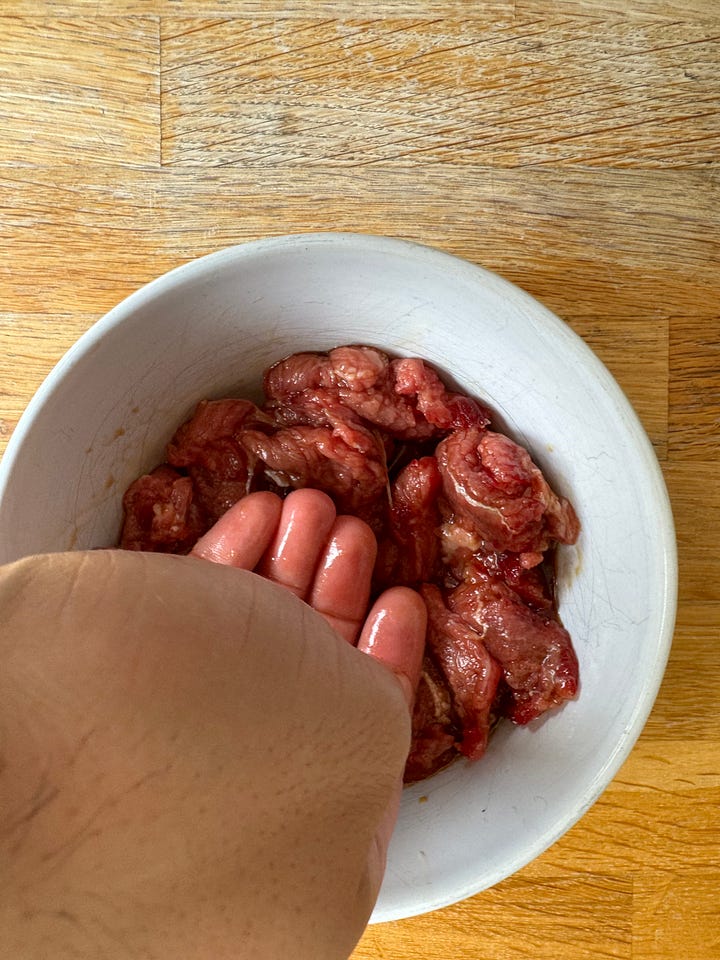
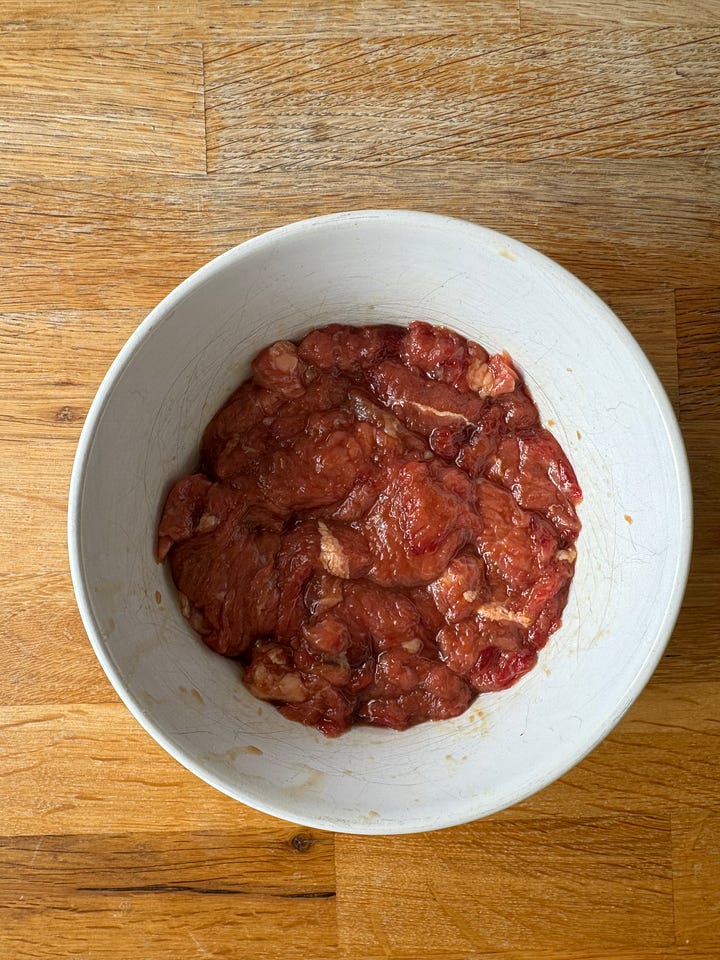
Preparing the Veg and Aromatics
Chop the garlic very coarsely. I find finely minced garlic burns too easily in the wok.
Cut your red chilli into nice uniform segments. Cut your spring onions into 2cm lengths. I find the firm parts of a spring onion work better for a stir fry so find the firmest green part (not white) and use that. The parts where the spring onion stalks fork are often quite firm.

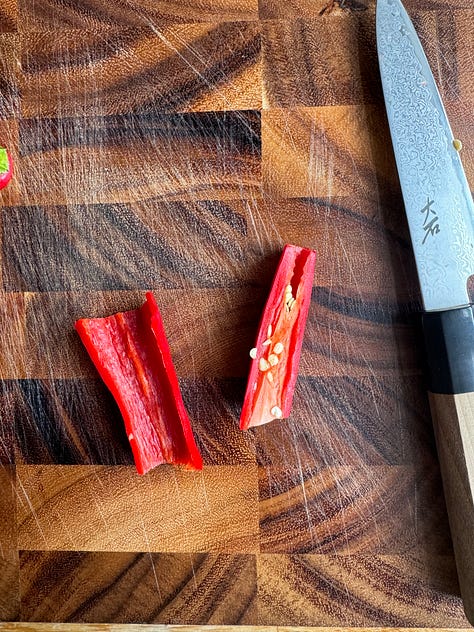
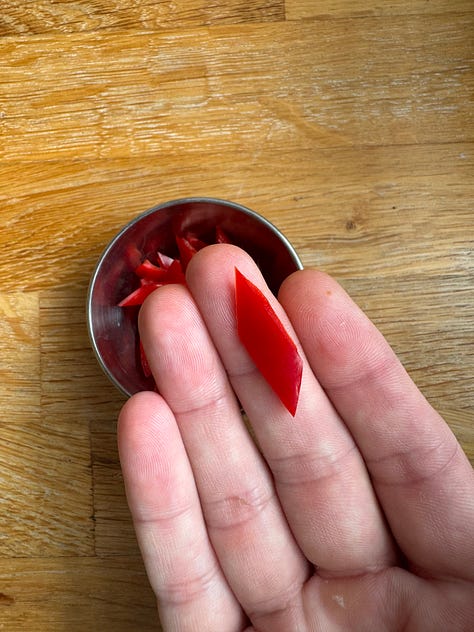
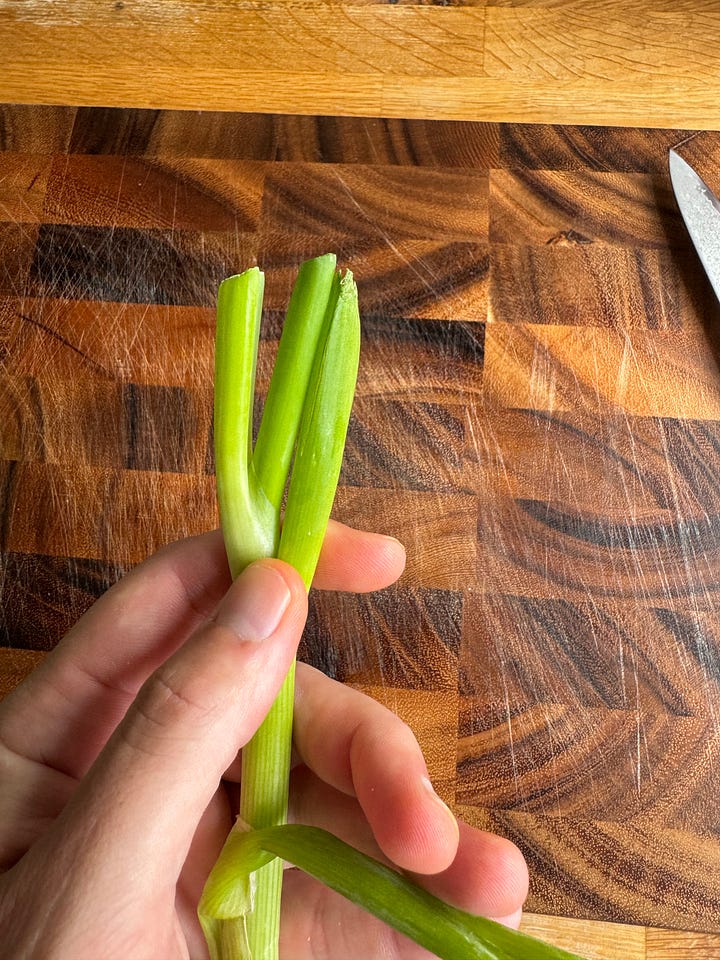
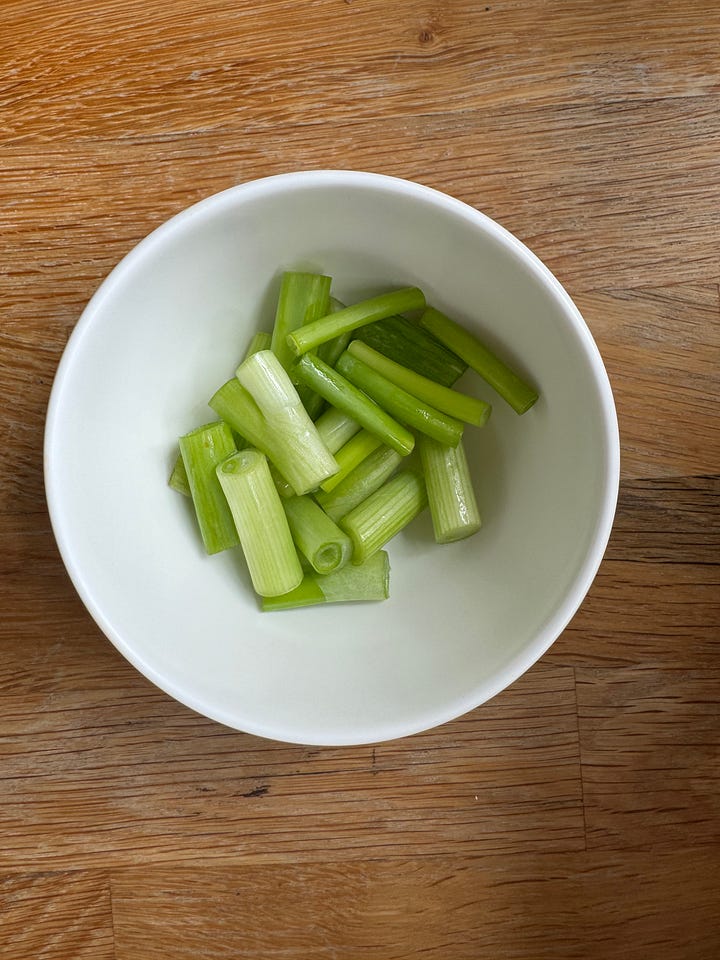
Blanching the Beef
In a pot of boiling hot water, blanch the beef for 1 minute. Remove with a strainer and set aside on a plate or tray.
Making The Stir Fry
Heat a wok on medium, add garlic and stir fry for a minute until fragrant. Add spring onion and chilli and stir fry for a further 30 seconds.
Add blanched beef, oyster sauce, salt and sugar, turn heat to high and stir fry for about 30 seconds.
Add 150ml of chicken stock, turn the heat off. Give the slurry a good stir to ensure the starch isn’t sitting at the bottom of the water, then add two teaspoons of slurry to the wok, directly on top of the chicken stock liquid.
Mix everything together for about 10 seconds and a sauce should form. Taste and adjust as necessary. If it needs more salt, add some salt; if the sauce is too gloopy add a little more chicken stock (and likely salt).
Method - The Short Version
Cut beef into uniform strips
Massage/agitate in water for 1-2 mins; then squeeze dry
Make marinade with marinade ingredients, add to beef and mix well
Cut chilli and spring onion into uniform pieces
Blanch beef in boiling water for 1 min, remove set aside onto a plate
In a wok, add oil, stir fry garlic for 1 min, add spring onion + chillies, beef, oyster sauce, sugar, and stir fry for a a minute or so
Turn off heat, add chicken stock then add 1 tsp starch slurry
Mix well until a sauce forms.
This will give you more slurry than you need, but for reasons explained later on it’s better to have surplus slurry





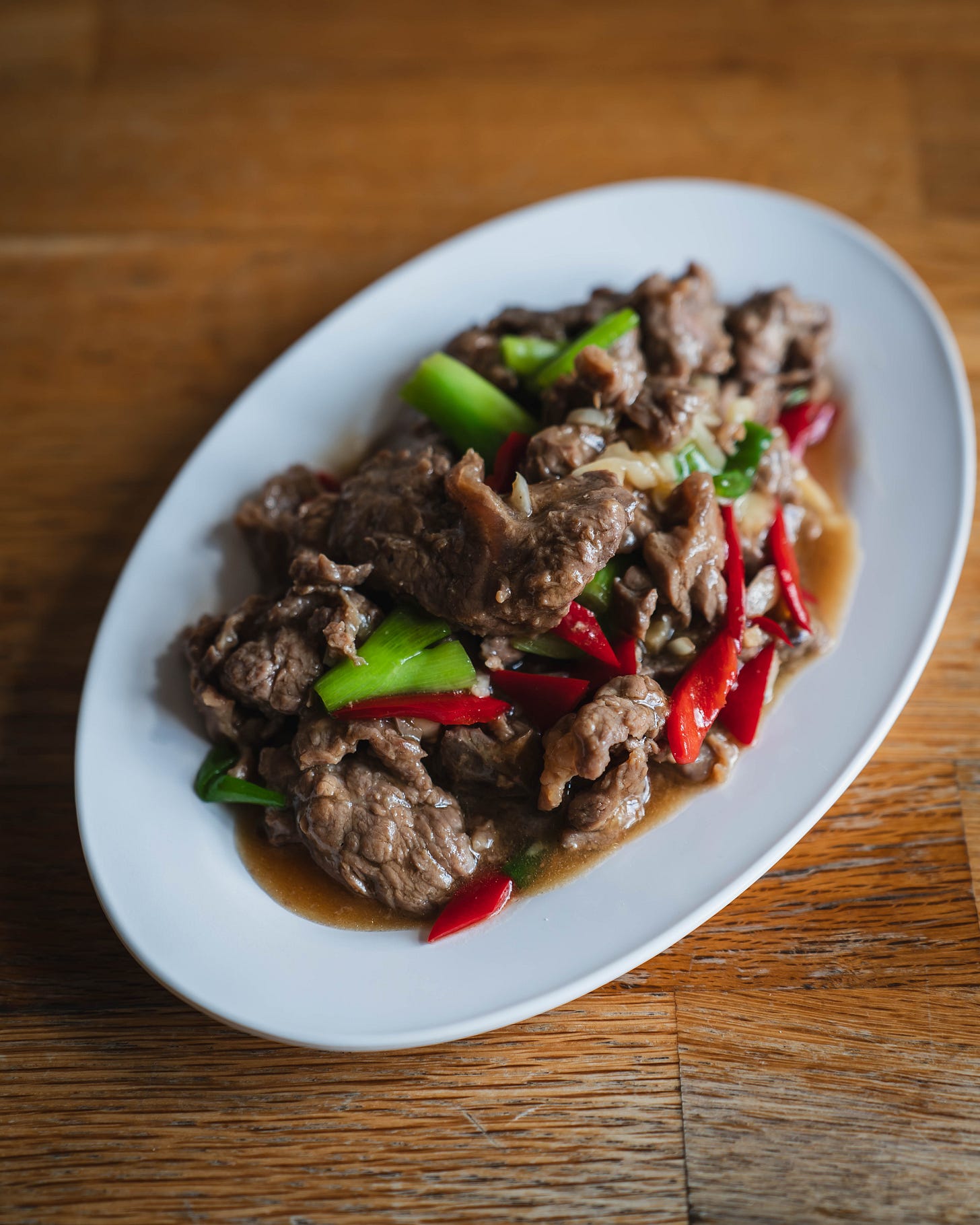
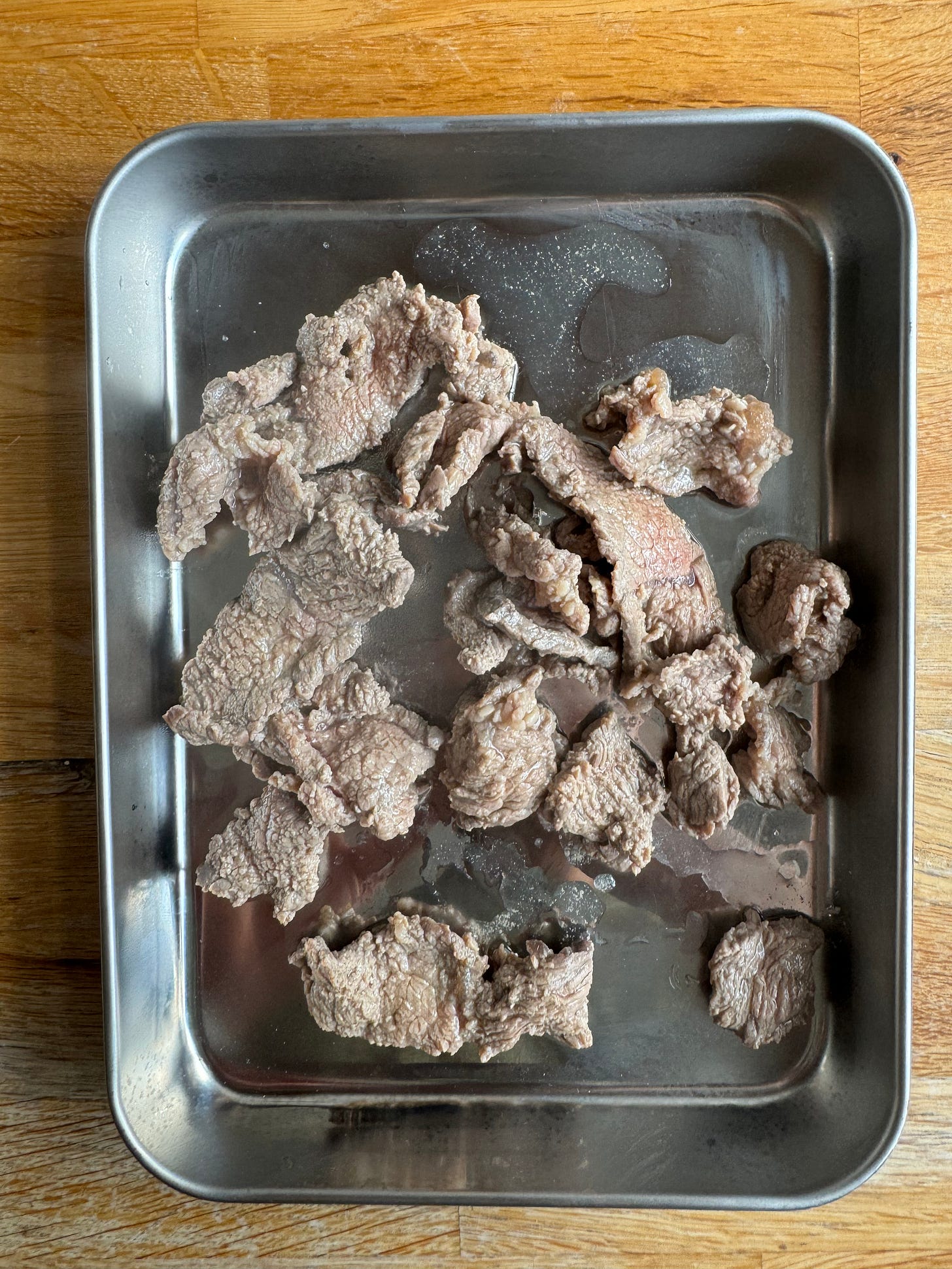

Are you taking song requests? I would love some sort of easy, simple spicy (gluten free) noodle. I’m unhappy with the top Google search results and am still eating your pad kaprow weekly so believe your the man for the job
Dan, brilliant content as always. I’m intrigued by the etymology behind some of these dishes - a lot of the terminology (eg ‘pad’ - which I understand to mean ‘fried’) is curious. How much does language influence the food or vice versa? Does the nomenclature of a dish represent a region? Would love to explore this via your expertise.